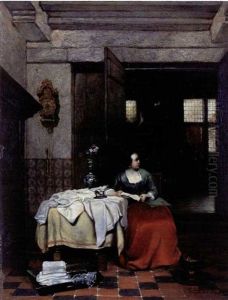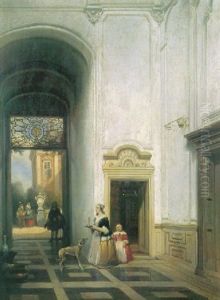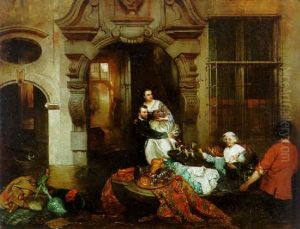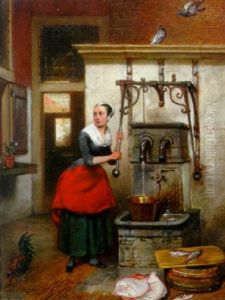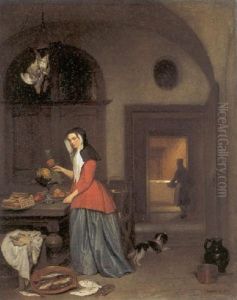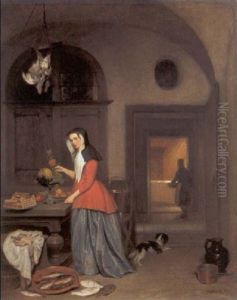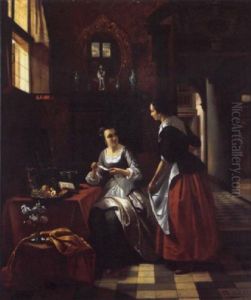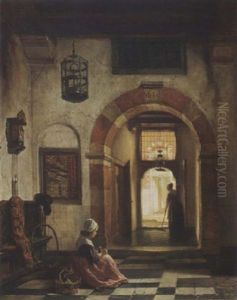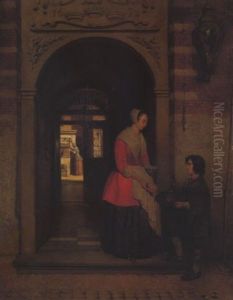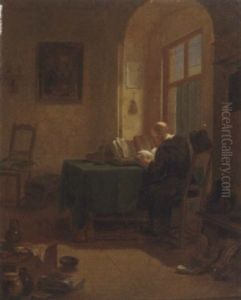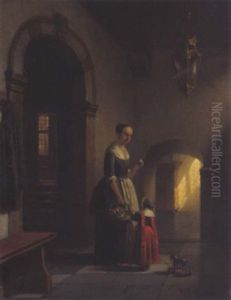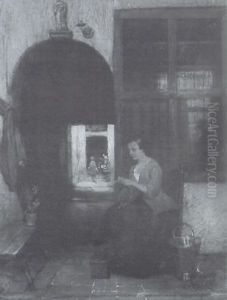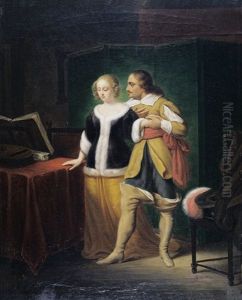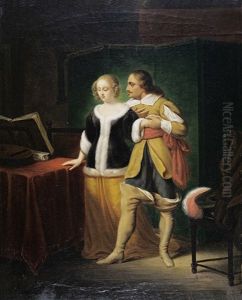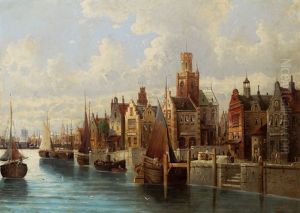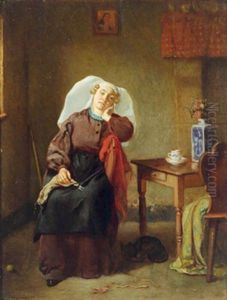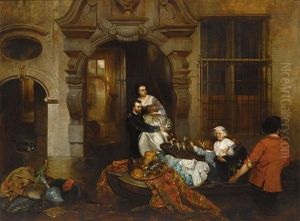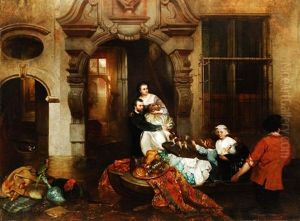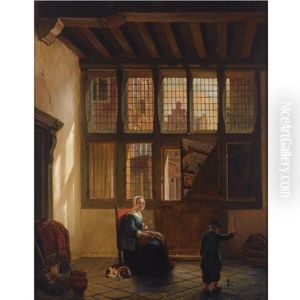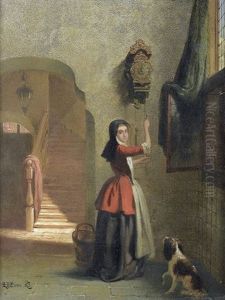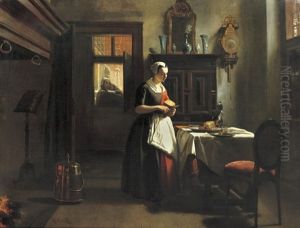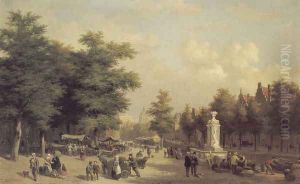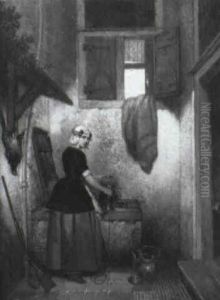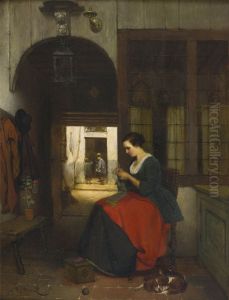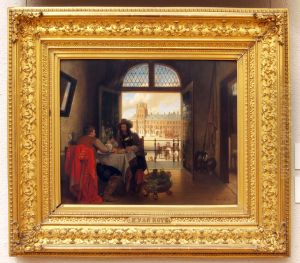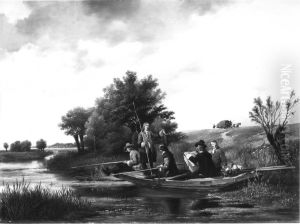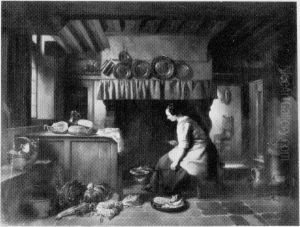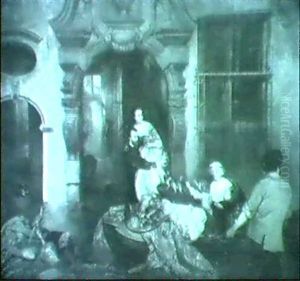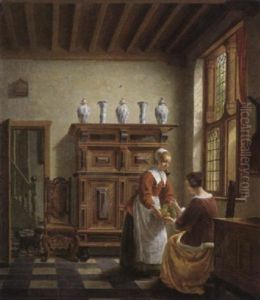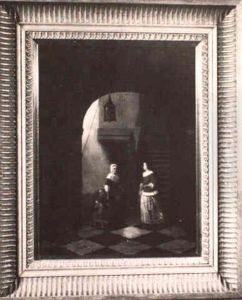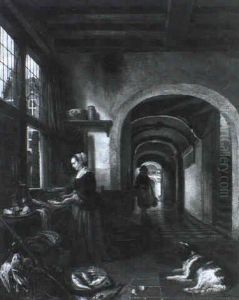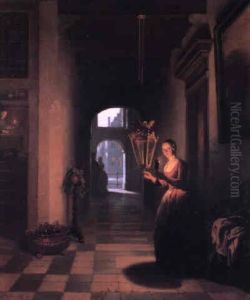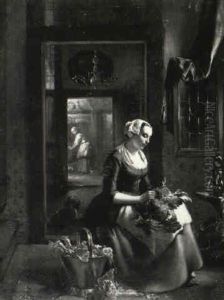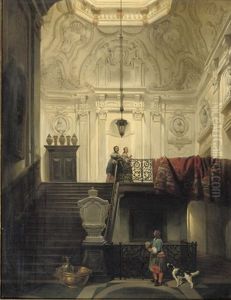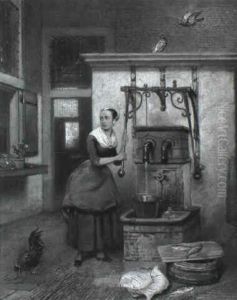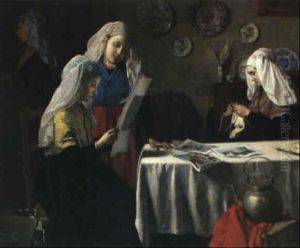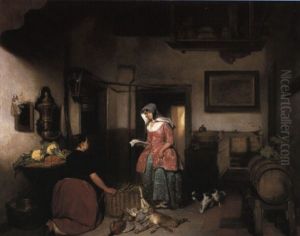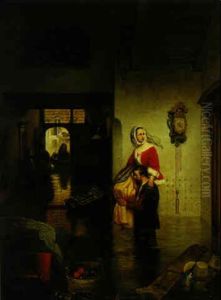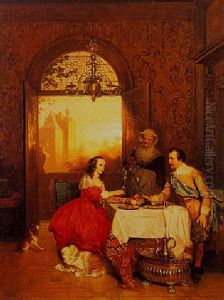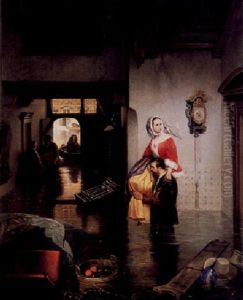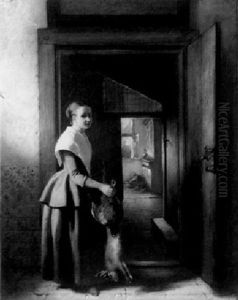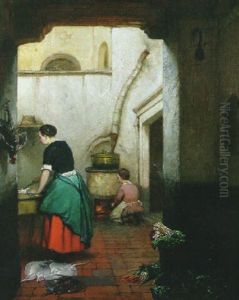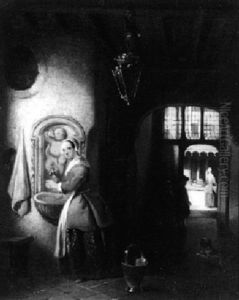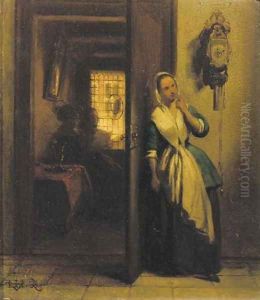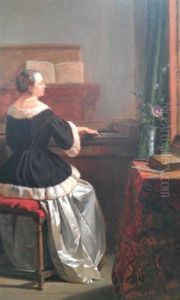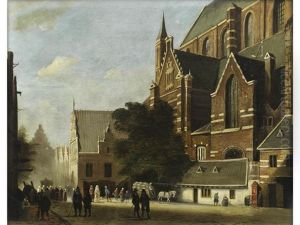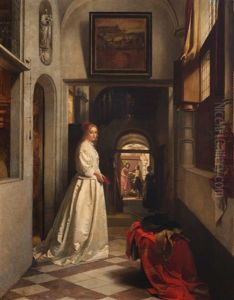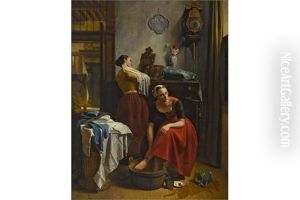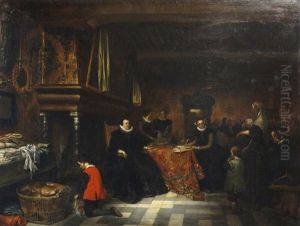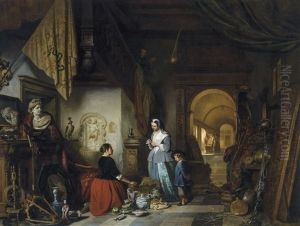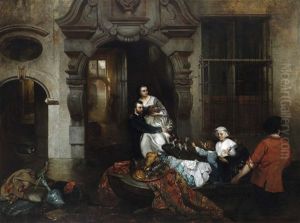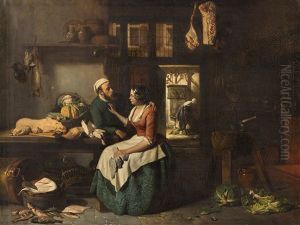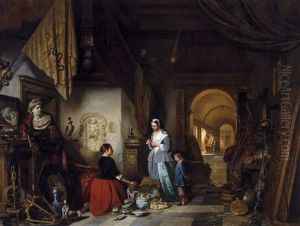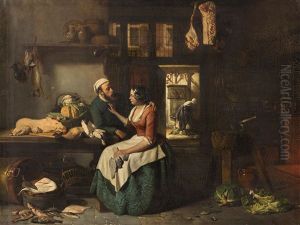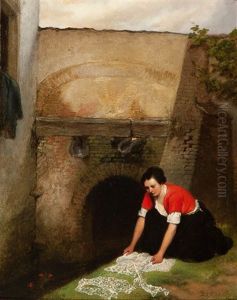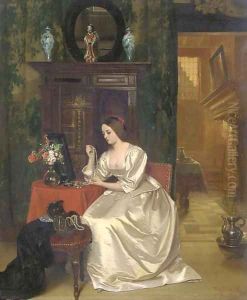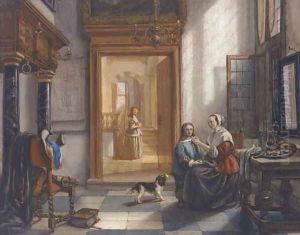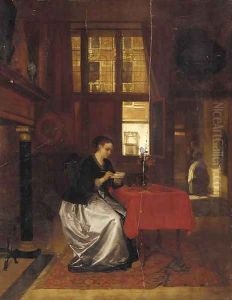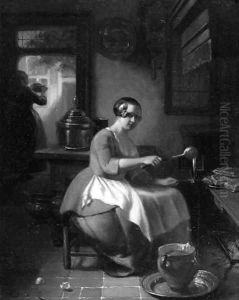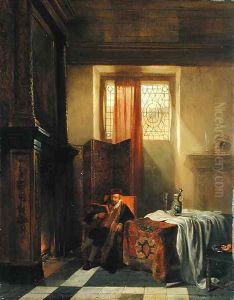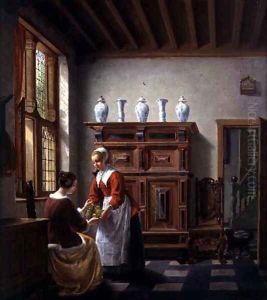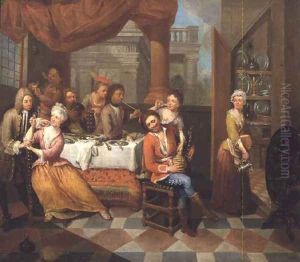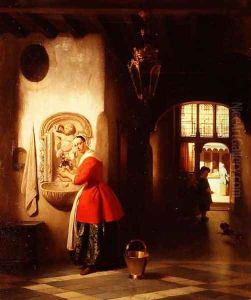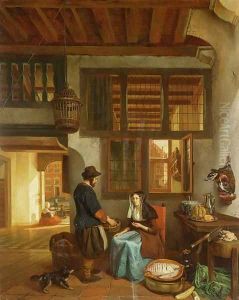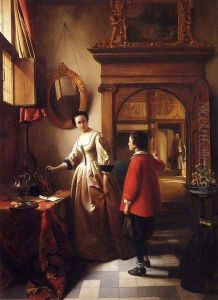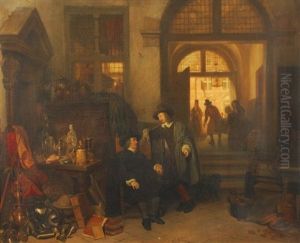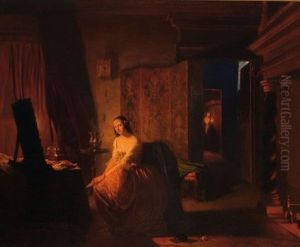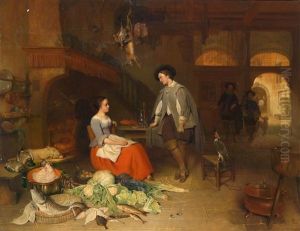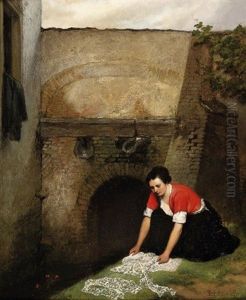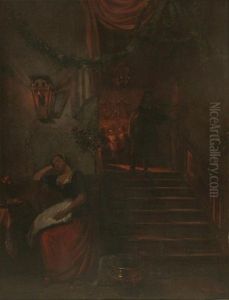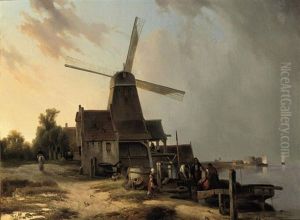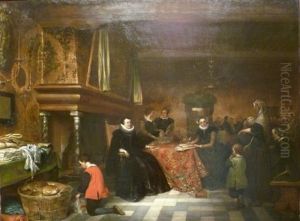Hubertus van Hove Paintings
Hubertus van Hove was a notable Dutch painter, born in The Hague, Netherlands, in 1814. He was deeply entrenched in the Dutch romantic tradition of painting, known for his detailed interior scenes as well as his architectural and cityscape works. Van Hove's artistic journey was heavily influenced by his father, Bartholomeus Johannes van Hove, who was also a celebrated painter and theatre decorator of his time. This familial environment immersed Hubertus in the world of art from a very young age, laying a strong foundation for his future career.
Van Hove received his initial artistic training from his father before further honing his skills at the Royal Academy of Art in The Hague. His early works were characterized by meticulous attention to detail and a vibrant use of color, traits that would define his style throughout his career. He also spent a significant part of his career in Antwerp, Belgium, where he was influenced by the Flemish tradition, integrating these elements into his own Dutch-inspired works.
Throughout the 1830s and 1840s, Hubertus van Hove became increasingly well-known for his interior scenes, which often depicted the affluent Dutch bourgeoisie in their homes, surrounded by luxury and comfort. These works were highly praised for their intricate detail, atmospheric lighting, and the ability to capture the textures of different materials, from the softness of velvet to the sheen of polished wood.
In addition to his interiors, van Hove also painted cityscapes and architectural works, capturing the essence of Dutch and Flemish cities with a romantic flair. His paintings often featured historical buildings bathed in a warm, glowing light, evoking a sense of nostalgia and reverence for the past.
Hubertus van Hove was also a respected teacher, sharing his knowledge and skills with the next generation of artists. Among his students was his own son, Huib van Hove, who would also go on to become a successful painter. This legacy of artistic mentorship underscored van Hove’s commitment to the development of Dutch art.
Van Hove's contributions to Dutch romantic painting were significant, and his works continue to be celebrated for their beauty and historical value. He passed away in 1865, leaving behind a rich legacy that has been admired by art enthusiasts and historians alike. His paintings are housed in various museums and collections around the world, serving as a testament to his skill and dedication to the craft of painting.
